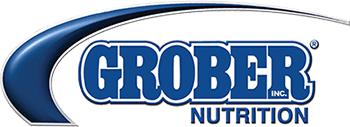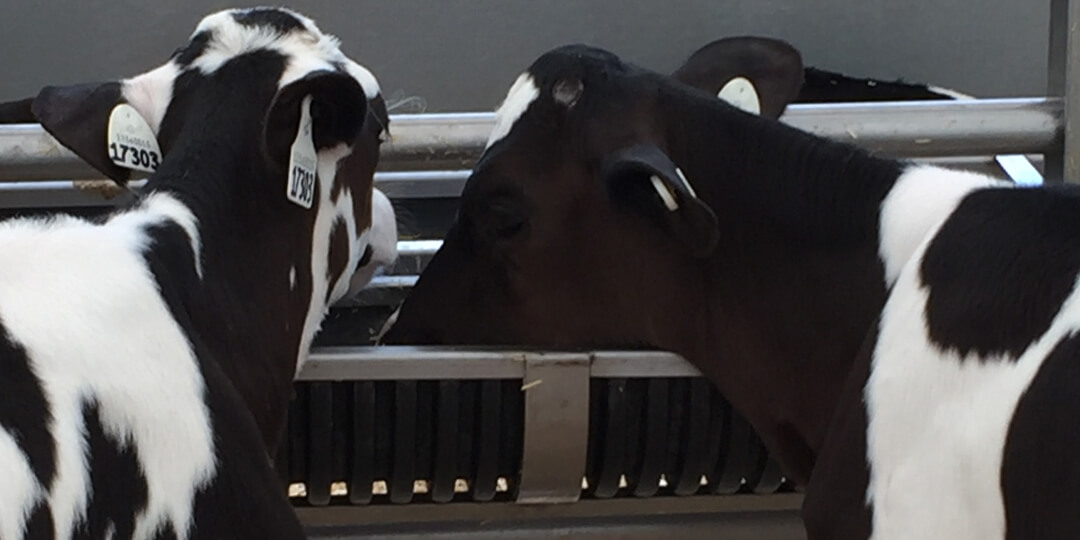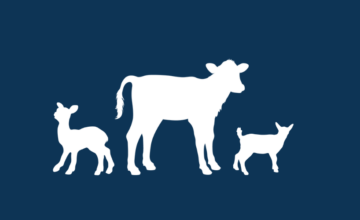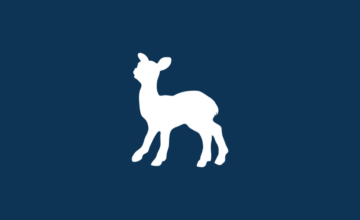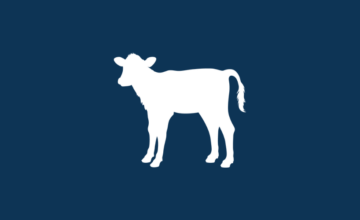Readiness to wean
- Mar 30, 2015
- By Grober Nutrition
- In Canada
Grober Nutrition is invested to be at the frontier of young animal nutrition, and the Grober Young Animal Development Center (GYADC) is an opportunity to explore new developments in young animal husbandry and nutrition. During 2014, one of the trials at the GYADC focused on dietary and developmental needs of neonatal calves and lambs, and weaning age. [button link=”/wp-content/uploads/2015/03/Readiness-to-Wean-by-Grober-Nutrition.pdf” type=”big” newwindow=”yes”] PDF Version[/button] Beyond the neonatal phase, calves face another large metabolic shift and a drastic leap in their development at weaning; where specific feed and housing management are again factors to be closely tailored to these animals needs. Transitioning from one feed type to another should be done at an age and in a fashion to allow for development and proper function of the digestive mechanisms and microbes the calf will rely on for feed breakdown. With this in mind, GYADC 2014 investigated readiness to weaning age at 7 or 10 weeks with two different pens allocated to each weaning age (n=50). Weaning was over a ten day step-down program, reducing intakes by 0.4L/day, with an allotment of 2L offered on the final day. Feed intakes, body weight gains, blood ketone levels, and visits to the feeder prior, during and after weaning were used to gauge weaning success. A collaborative study was conducted at the Grober Young Animal Development Center (GYADC) with Hana Brown and Dr. Ken Leslie of the University of Guelph. This experiment entailed testing a drop of whole blood for the β-hydroxybutyrate (BHB) levels, using the calf-side Precision Xtra test, before and during weaning. The objective of the study was to determine if blood BHB levels were predictive of the readiness for weaning, according to rumen function, which is an important factor for successful weaning. As the rumen develops, microbial populations increase, generating volatile fatty acids (VFAs) from the fermentation of solid feed. The VFAs diffuse through the lining of the rumen, and should be recognized as ketones (BHB) in the blood.  In this experiment, calves weaned at 10 weeks showed significantly greater and more consistent average daily gain (ADG), and expressed less frustration behavior, versus the calves weaned at 7 weeks (Figure 2 and 3). The later weaned calves consumed more grain as a percentage of body weight (Figure 1), which corresponded to their increased weight gain during and after weaning (Figure 2).
In this experiment, calves weaned at 10 weeks showed significantly greater and more consistent average daily gain (ADG), and expressed less frustration behavior, versus the calves weaned at 7 weeks (Figure 2 and 3). The later weaned calves consumed more grain as a percentage of body weight (Figure 1), which corresponded to their increased weight gain during and after weaning (Figure 2).  The larger intakes of dry feed also represented an improved ability to digest this form of feed, consistent with a more mature level of function in the GI tract of these calves. This observation was reflective in the blood BHB results, where ten week old calves had higher levels of BHB leading up to, and after weaning. These calves also had fewer unrewarded feeder visits (Figure 3), suggesting a link between decreased frustration with being weaned off milk, and a greater eagerness to consume grain as an effectively utilized energy source.
The larger intakes of dry feed also represented an improved ability to digest this form of feed, consistent with a more mature level of function in the GI tract of these calves. This observation was reflective in the blood BHB results, where ten week old calves had higher levels of BHB leading up to, and after weaning. These calves also had fewer unrewarded feeder visits (Figure 3), suggesting a link between decreased frustration with being weaned off milk, and a greater eagerness to consume grain as an effectively utilized energy source.  Measuring grain intake as a percentage of body weight and using automatic feeder technology can be useful tools when judging a calf’s biological readiness to wean. Calves eating a minimum of 1.6% of their body weight in calf starter (~1.5kg / 3.5lb) prior to weaning seemed to signify a more efficient digestive system compared to intakes of 1% (~1kg / 2.2lb) in terms of fermenting and digesting solid feeds. Observing rewarded vs. unrewarded feeder visits can help to identify calves struggling with weaning and the weaning program adjusted for them to avoid losses in ADG during weaning and potentially deter cross suckling.
Measuring grain intake as a percentage of body weight and using automatic feeder technology can be useful tools when judging a calf’s biological readiness to wean. Calves eating a minimum of 1.6% of their body weight in calf starter (~1.5kg / 3.5lb) prior to weaning seemed to signify a more efficient digestive system compared to intakes of 1% (~1kg / 2.2lb) in terms of fermenting and digesting solid feeds. Observing rewarded vs. unrewarded feeder visits can help to identify calves struggling with weaning and the weaning program adjusted for them to avoid losses in ADG during weaning and potentially deter cross suckling.  Calf nutrition and management will continue to evolve alongside new technology to improve calf care and invested research will improve strategies for optimizing the different developmental and nutritional needs of the varying phases of neonatal life to adulthood. The GYADC will return in 2015 at the front lines of young animal innovations with new trials to broaden our understanding and to improve upon neonatal care and nutrition recommendations. Special mention to Canada’s Outdoor Farm show for being an ever-ready resource for our needs, Agri-Plastics Mfg. for providing calf housing supplies, Brodie Ag & Industrial Inc. for providing the Vertablend mixer, Shur-Gain for providing lamb creep feed, and Darcroft Farms Ltd. for providing hay, equipment and labor support.
Calf nutrition and management will continue to evolve alongside new technology to improve calf care and invested research will improve strategies for optimizing the different developmental and nutritional needs of the varying phases of neonatal life to adulthood. The GYADC will return in 2015 at the front lines of young animal innovations with new trials to broaden our understanding and to improve upon neonatal care and nutrition recommendations. Special mention to Canada’s Outdoor Farm show for being an ever-ready resource for our needs, Agri-Plastics Mfg. for providing calf housing supplies, Brodie Ag & Industrial Inc. for providing the Vertablend mixer, Shur-Gain for providing lamb creep feed, and Darcroft Farms Ltd. for providing hay, equipment and labor support.
Grober Nutrition
Recent Posts
Tags
Archives
- October 2024
- July 2024
- May 2024
- April 2024
- January 2024
- December 2023
- October 2023
- September 2023
- August 2023
- June 2023
- December 2022
- November 2022
- October 2022
- August 2022
- July 2022
- June 2022
- May 2022
- April 2022
- March 2022
- February 2022
- January 2022
- August 2021
- February 2021
- September 2020
- June 2020
- April 2020
- May 2017
- April 2017
- October 2016
- September 2016
- August 2016
- March 2016
- March 2015
- January 2015
- December 2014
- December 2013
- September 2013
- May 2013
- January 2013
- December 2012
- November 2012
- March 2012
- March 2011
- February 2011
- November 2010
- August 2010
- December 2009
- November 2009
- March 2009

